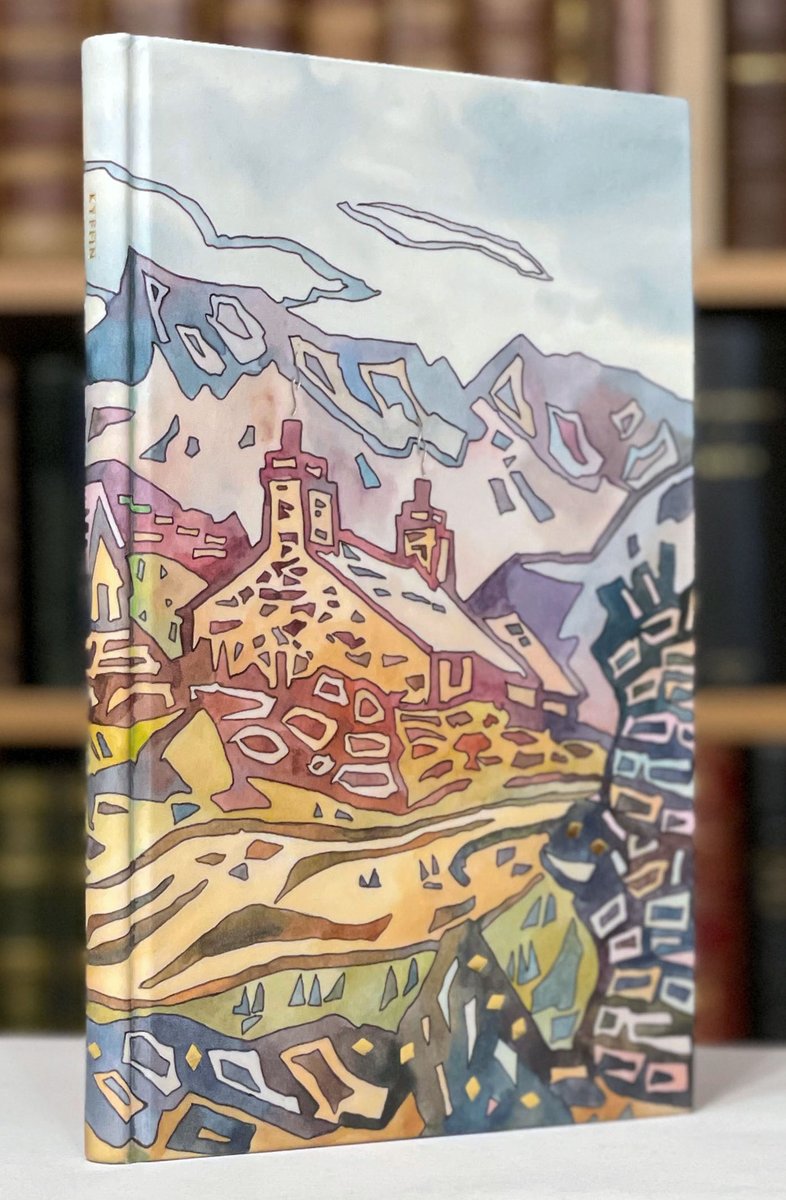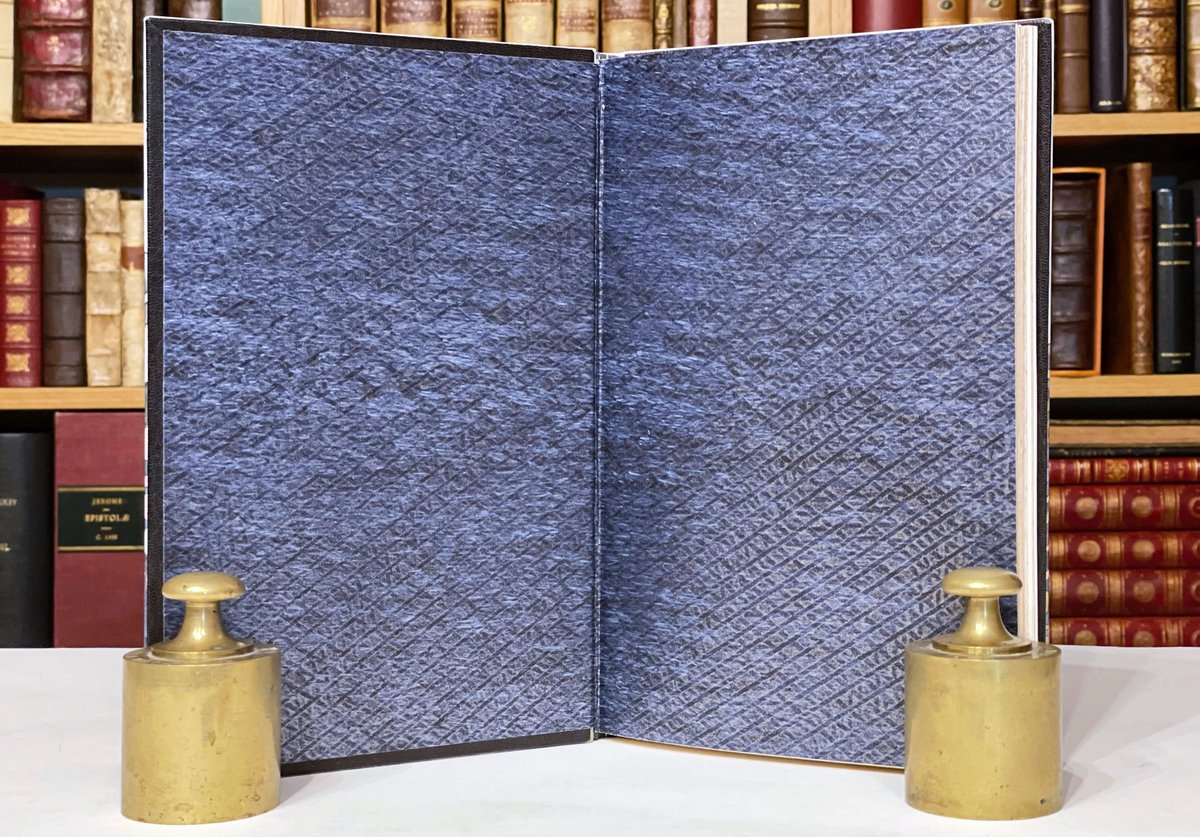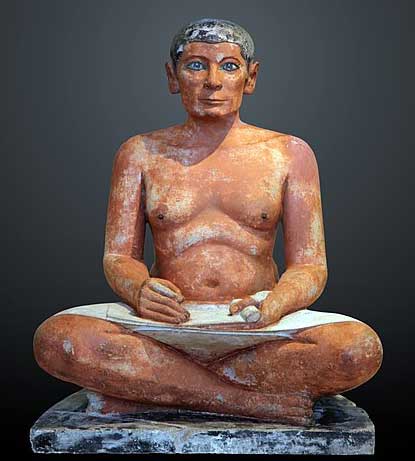Kyffin: A Celebration - Gwasg Gregynog, 2007.
Bound by Stuart Brockman in 2007 in translucent vellum over an original watercolour painting and tooled with chimney smoke in palladium, punctuated with gilt diamond shaped tooling; deep blue and silver patterned endpapers. 1/
Bound by Stuart Brockman in 2007 in translucent vellum over an original watercolour painting and tooled with chimney smoke in palladium, punctuated with gilt diamond shaped tooling; deep blue and silver patterned endpapers. 1/

A tribute to Kyffin Williams's art with a striking image of a Welsh village stretching across both boards.
Brockman has here brought the "vellucent" technique of translucent vellum over painted boards - first developed by Chivers of Bath around 1903 - into the 21st century. 2/


Brockman has here brought the "vellucent" technique of translucent vellum over painted boards - first developed by Chivers of Bath around 1903 - into the 21st century. 2/



The Bath bookbinder Cedric Chivers first patented his "vellucent" method of art-bookbinding in 1898. An artist would paint on a thin surface medium; then a sheet of vellum, shaved to translucent thinness, was laid over it, giving the underlying painting a luminous warmth. 3/ 

The advantage of this method - whether used in 1900 by Cedric Chivers, or in 2007 by Stuart Brockman - is the mysterious warmth imparted by the translucent vellum and of course that the fragile underlying painting is fully protected by the hardwearing vellum laid on top of it. 4/ 



The book is housed in an inner UV-resistant perspex display box and then an outer velvet-lined box. 50 of the total edition of 360 copies were produced in unbound form for use by the Society of Designer Bookbinders, of which Stuart Brockman is a Fellow, their highest accolade. 5/ 





• • •
Missing some Tweet in this thread? You can try to
force a refresh


















